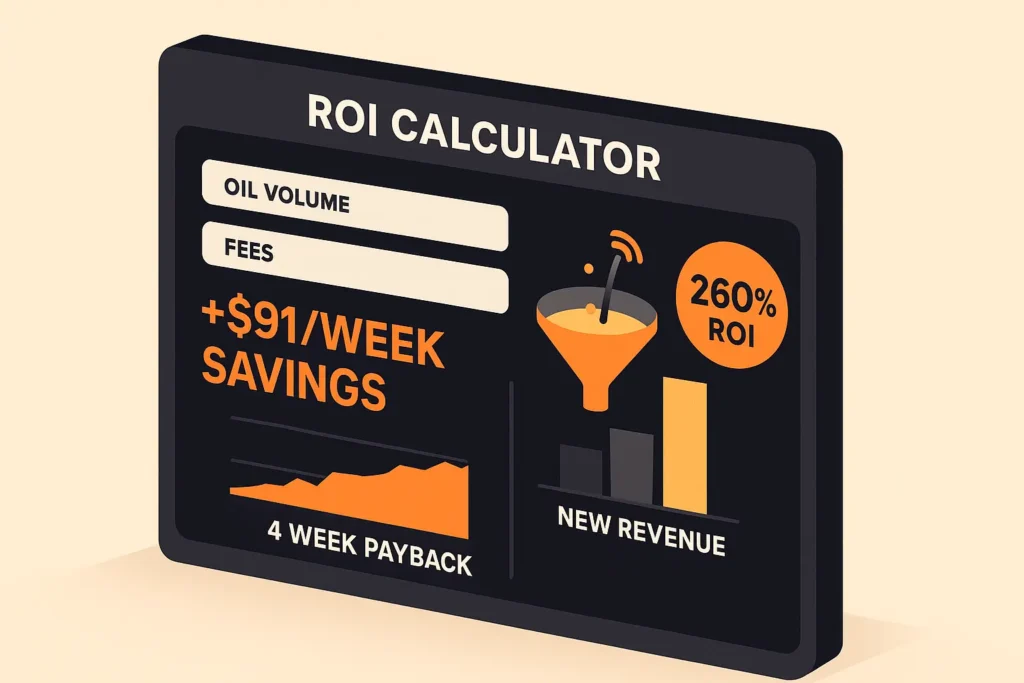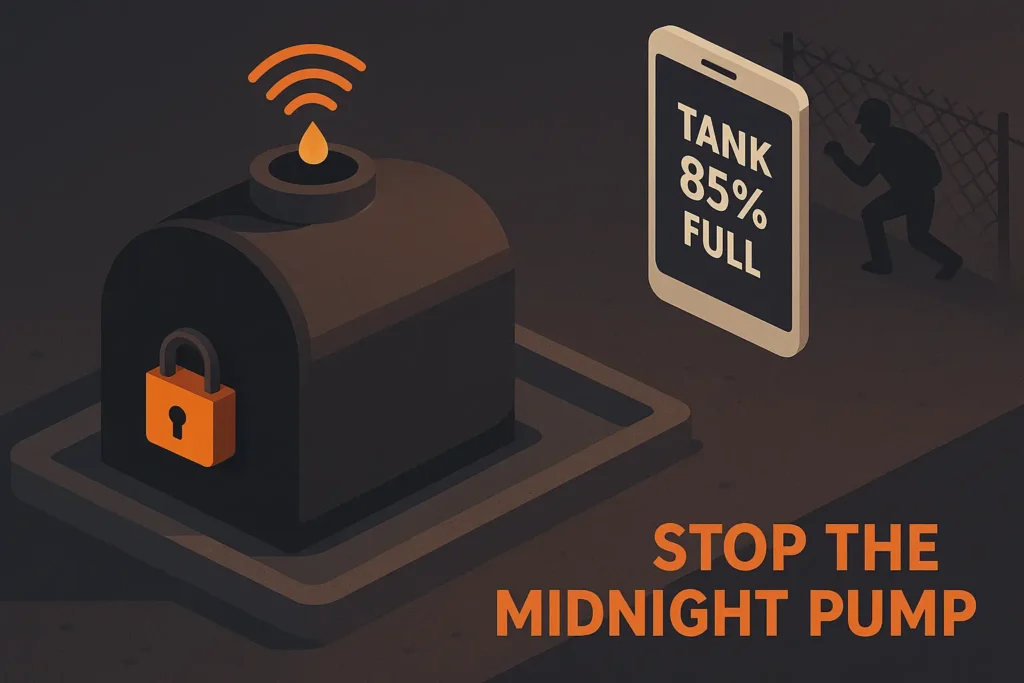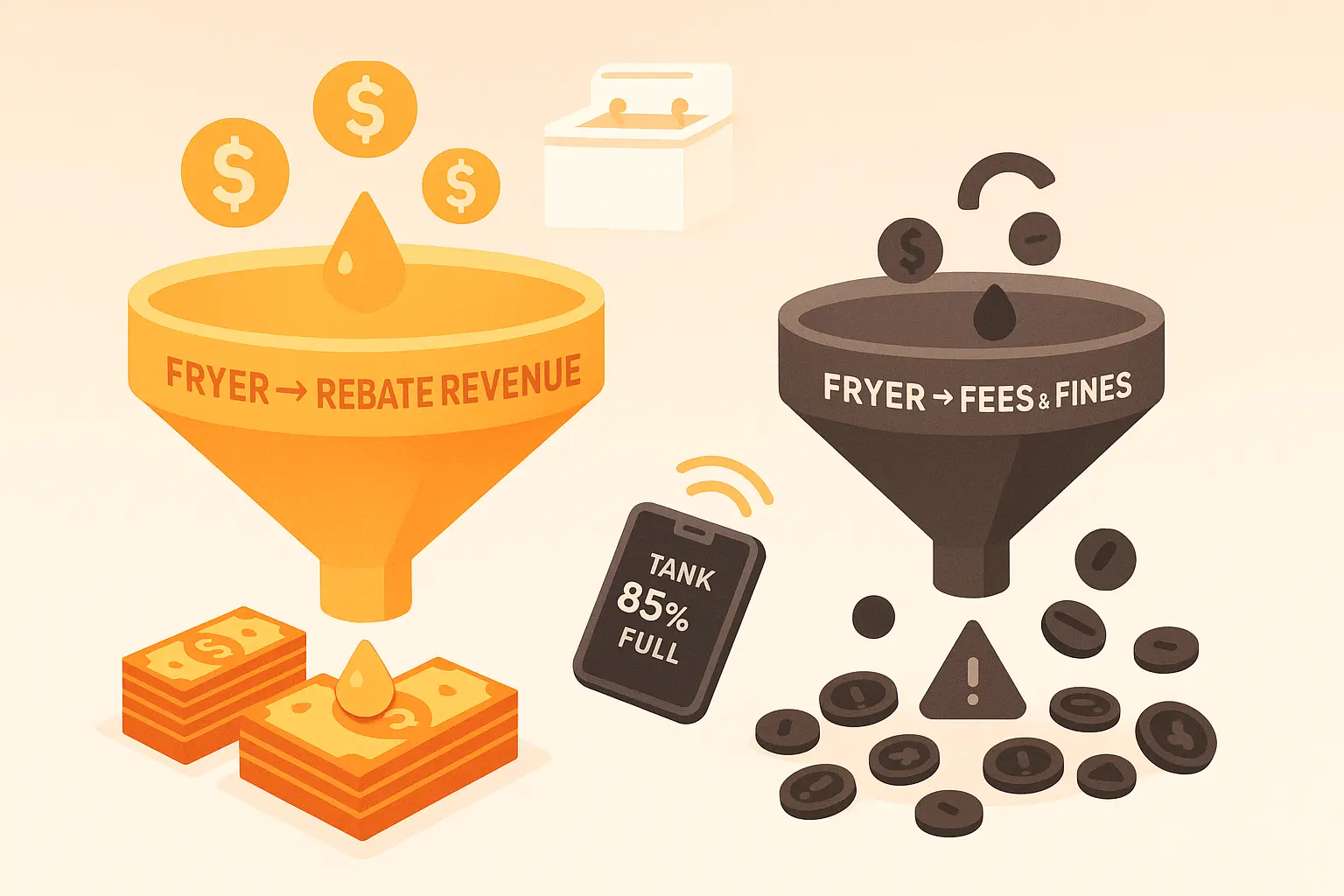Table of Contents
Why should restaurants care about rebate ROI?
When yellow grease prices spike, as they did to $1,190 a ton on the Gulf Coast in May 2025, every gallon in your fryer is an income stream, not trash. Yet many kitchens still “pay to haul,” losing up to $0.82 per gallon in disposal costs that a rival across the street converts into a $0.38 credit. Add Florida’s rising carbon fuel demand and theft losses that now drain 8 percent of U.S. supply, and the financial stakes become obvious. In short: the bigger ROI isn’t the rebate check itself; it’s the wide gap between earning on waste oil and paying fees and fines to remove it.

How is ROI on used oil programs actually calculated?
Grease Connections’ Green ROI Formula: (Rebates + Fees Avoided + Fines Avoided – Program Cost) ÷ Program Cost × 100 has been adopted by restaurant finance teams from Miami to Newark. Start with the vendor’s price per gallon: 2025 rebate offers range from $0.10 to $0.50 depending on volume and quality. Subtract the fine print charges: admin fees average $5 to $25 a month, processing fees $0.02 to $0.08 per gallon, and minimum pickup charges $15 to $40. Factor in avoided trap pumping or sewer surcharges, up to $475 indoors and $1,040 outdoors in New Jersey alone, and the math quickly favors a transparent rebate model.
Which vendor model leaves the most money on the table?
| Provider | Rebate ¢/gal* | Typical Fees | Net Return/100 gal | Source |
|---|---|---|---|---|
| Grease Connections | 35 | $0 | +$35 | Industry data |
| Baker Commodities | 0 | none listed | 0 | Company info |
| Restaurant Technologies | 0 | Equipment rental (undisclosed) | – | Company info |
| “Free” Pickup (typical) | 0 | $30 rent + $0.05/gal | –$35 | Market average |
What costs erode ROI?
Contamination fees, triggered when water or food scraps raise FFA levels, wipe out as much as $0.25 per gallon in value. Missed pickups force emergency hauls priced at $300 to $600, particularly in dense Florida metros where sewer backups bring county fines of $250 to $900. The black market “midnight pumping” economy now sells stolen grease for up to $3 a gallon, costing the average 200 seat restaurant $6,000 a year if tanks aren’t locked. A vendor that supplies theft proof containers and IoT fill sensors keeps those silent expenses off your P&L and pushes real ROI higher.

Do rebates change by region?
| Market (Q2 2025) | Yellow Grease Spot $/cwt | Typical Rebate ¢/gal | Avg. Service Fee | Net Swing | Source |
|---|---|---|---|---|---|
| Miami, FL | 36 to 45 | 40 | 0 | +$0.40 | USDA/market data |
| Atlanta, GA | 33 to 41 | 35 | 0.03 | +0.32 | USDA/market data |
| Newark, NJ | 34 to 38 | 50 | 0 | +0.50 | USDA/market data |
Warm Gulf pricing and dense biodiesel demand give Florida a high baseline. Competition in urban New Jersey pushes rebates to the top of the 2025 range, while Georgia’s county fines nudge many kitchens toward collection companies that waive service fees entirely.
Case study: A Miami bistro’s 30 day payback
La Palma Bistro fries 100 gallons of oil weekly. It switched from a “free” pickup to Grease Connections. Under the previous deal it paid $40 equipment rent and forfeited $0.40/gal in market value (total loss $56/week). The new contract delivers a flat 35 ¢ rebate per gallon and zero fees, netting $35/week. Result: a $91 swing every seven days. At that rate, the bistro recouped the one time $360 install cost in exactly four weeks, then banked $4,700 in year one cash flow. Figures verified against spot prices and fee schedules above.
Negotiation playbook: securing top rebate tiers
First, ask for the vendor’s published commodity index (Fastmarkets or USDA) and insist on a floating rebate pegged to 60 percent of spot price. Next, cap processing fees at two cents per gallon and require a theft proof container clause; Enable.com research shows clearly written rebate agreements protect 7 to 15 percent additional margin over verbal deals. Finally, build an “escalator” that climbs when volumes grow so your ROI compounds with each fryer upgrade.
DIY checklist to verify your own ROI
- Pull last month’s fryer oil volume from ordering invoices.
- Grab the vendor’s latest rebate offer and fee sheet.
- Insert numbers into the Green ROI Calculator template (free on our site).
- Add grease trap pumping and sewer surcharges you pay today; most kitchens omit these costs.
- Subtract any equipment rent or minimum pickup charges.
The tool converts the data into a payback period and carbon offset line item you can forward to management in minutes, ideal for voice search queries like “What’s my used oil rebate ROI in Miami?”
Why Grease Connections tops every metric
Our Florida, Georgia, and New Jersey hubs pledge a same day pickup window, theft proof tanks, zero hidden fees, and a transparent rebate tied to USDA pricing. Independent audits confirm we outperform “free” pickups by $0.35 to $0.50 per gallon, translating to $3,500 to $5,000 annual upside for a mid size restaurant kitchen. That blend of financial clarity and local service is why Miami Herald climate reporters regularly cite us as the circular economy leader in South Florida.









